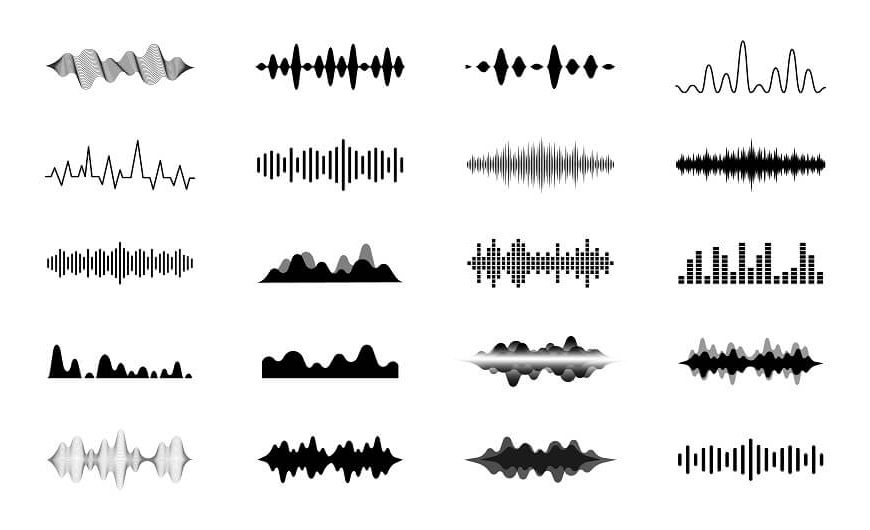Find out how sound is produced! Showing children how sound is produced will make science interesting for all ages. Whether you use this sound exercise at home or in the classroom, it works well with all curricula. Younger and older kids alike will love discovering the process of music creation.
Sound is a vital component in the complex tapestry of our sensory experience. Children can find it intriguing to learn about the physics underlying music creation, which not only satisfies their curiosity but also establishes a greater respect for the world of sound. In this blog, we shall investigate how sound is created, the components involved, and the procedures that give birth to this fascinating symphony.
How Is Sound Produced
From the rustling of leaves to the melodic tweeting of birds, sound permeates every aspect of our existence. Have you ever pondered, though, how sound is created? This question is fundamental to our auditory comprehension. It takes a complicated interaction of materials to produce sound, and understanding the basic mechanics is the first step towards solving this riddle.
How Is Sound Formed?
Sound is fundamentally a vibration that passes across a medium, most often air. But what sets off these oscillations? Sound waves are the key to the solution. When a product oscillates, the elements in the immediate medium move, producing sound waves. When you strike a drum, for example, its top half vibrates, which triggers the surrounding air molecules to vibrate and create sound waves.
In other words, the sound is merely the result of an object’s vibrations disturbing air particles and producing an effect of ripples that our ears can detect. This foundational knowledge lays the groundwork for exploring the components that go into making sound.
Elements Of Sound Production
After briefly discussing the formation of sound, let’s examine the essential components that combine to produce this miracle of the senses.
- Source of Vibration:
- Medium of Transmission:
- Receptor of Sound:
After briefly discussing the formation of sound, let’s examine the essential components that combine to produce this miracle of the senses.There is always an item that causes the vibrations that produce a sound. It can possibly be a piano’s keys, a singer’s vocal cords, or a guitar’s strings. Kids always try to learn to take into account the range of tones they’re exposed to on an everyday basis when they are given information about the numerous sources of vibration.
Air is the most prevalent medium via which sound may travel. But sound may also pass through both liquids and solids. Children can better understand the idea of sound transmission via various media if this concept is explained to them by easy exercises, such as tapping their ears against a table.
A detector or receiver is required in order to sense sound. It’s our ears in this instance. Kids can learn a lot about the ear’s internal structure and how it perceives sound waves as cues that the brain comprehends.
The Symphony Unveiled: Process of Sound Production
Understanding that the basics are only the beginning. A complex set of procedures known as sound generation converts basic vibrations into the wide variety of sounds we hear on a daily basis.
- Generation of Vibrations:
- Transmission Through A Medium:
- Reception By The Ear:
- Perception In The Brain:
As was already indicated, the procedure starts with vibrations. Vibrations are the source of all sound, whether they come from the striking of a drum, the plucking of guitar strings, or the resonance of voice chords.
The vibrations require a medium to pass through after they are produced. This is when the media’s characteristics become important. The properties of the sound we perceive are influenced by the speed and quality of sound transmission, which is affected by various media.
When these vibrations reach our ears, magic happens. Vibrations are detected by the ear, an incredibly complex organ that converts them into electrical impulses that the brain can understand. Teaching kids about the ear’s function in this process might pique their interest in the amazing things the human body is capable of.
The brain’s interpretation of these electrical impulses into sounds that humans are familiar with is the last stage. Thanks to this decoding process, we can tell the difference between the sound of a car engine humming, the rustle of leaves, and a friend’s laughing.
How Sound Is Made Activity For Kids
It’s common knowledge that youngsters have an innate interest in cause and effect from an early age. This rattle makes a sound when I shake it. My toy vehicle slides around the floor as I push it. A sound is produced when I strike this pot with a wooden spoon. A lot of sound!
Children learn to influence and interact with their surroundings through cause and effect, and comprehending cause and effect aids in the development of problem-solving abilities. In light of this, I made my three-year-old son, R, an entertaining game to help him visualise how sound is produced when he hits a drum.
This was such a great thing to do! It was assembled in a matter of minutes, produced a great deal of mess and noise, and taught us a great deal of new information!
Supplies Needed To Teach Kids How Sound Is Made
- Various-sized containers (empty bowls and tin cans are great)
- Wooden spoons or chopsticks that may be used as drumsticks
- Extra-large balloons and cellophane sheets for the drumskins
- Different things (we used grains, flour, dry beans, and marbles) to bounce on the drums
- Bands of rubber
- Scissors in a pair
Directions To Learn How Sound Is Made
Make Your Drums:
- Step 1
- Step 2
- Step 3
Cut off the balloon’s end (the area you would blow into) using the scissors.
You’re done when you extend the balloon over the container of your choice! Right away, drum.
Cut the cellophane paper to fit over one of the additional containers for your next drum, then fasten it with a rubber band. Right there! In minutes, two drums were created.
Setting Up Your Experiment
As you set up your experiment, add different objects to the rim of every drum. Put it as near to the centre as you can, like:
- Rice
- Dried beans
- Marbles
- Beads
- Fish Rocks
- Confetti
- Sprinkles
Start beating those drums now, and observe as the rice, beans, and marbles start to fly everywhere!
How Sound Is Made: Drum Experiment Explanation
You will observe that the materials on the drum exhibit behaviour that is very comparable to that of air molecules. Vibrations in the skin cause the objects on the drum to dance.
The process of sound production occurs when air molecules vibrate against one another.
Variations On This Sound And Drum Experiment
Did you realise that you may adjust the experiment’s level and sound? Yes, and it’s relatively simple!
- Changing Pitch Of The Drum:
- Changing Sound Of The Drum:
- Changing Volume Of The Drum:
The tightness of the drum’s skin affects the pitch of the drum. Your drum will make a higher-pitched note if its skin is tight. The noise level will decrease as the skin becomes looser.
The quantity of air within the drum affects the sound as well. Your drum will produce lower notes the more air it has. You will be able to produce higher notes with less air within your drum.
Your drum’s volume depends on how big the vibrations are. There will be a loud sound if you beat the drum hard (take care not to shatter your drum). You will produce a softer sound if you beat your drum gently.
More Experiments To Try With: How Sound Is Made Drum Activity
As we played, there were plenty of laughs and yells, and it was a lot of fun. You might increase this activity’s learning potential by posing queries like these:
- Which drum surface gives the maximum bounce for the items on top?
- Which drum surface gives the most significant duration of bouncing to the items on top?
- Which things bounce the highest?
- What difference does hitting the drumstick harder or softer make to the outcome?
Deepening The Understanding: Experiments And Activities
Including practical experiments and activities may be a great way to get kids interested in what they’re studying.
- DIY Instruments:&
- Sound Scavenger Hunt:
- Kitchen Symphony:
Encourage kids to utilise everyday objects to make their own simple musical instruments. This introduces kids to the idea that they may actively contribute to the production of sound in addition to reinforcing the idea that vibration is the source of sound.
Take kids on a sound scavenger expedition and ask them to recognise various noise sources in their surroundings. This practise helps them become more conscious of sound and promotes the idea that sound is present everywhere.
Make a small kitchen symphony out of everyday objects. Pots and pans turn into drums, wooden spoons become drumsticks, and glasses with varied water levels produce different pitches. Through this hands-on activity, children may learn about the versatility of music creation.
Empowering the Future Audiophiles
In conclusion, teaching kids how to make sound is a gateway to a deeper, more complex understanding of the world around them, not just an academic pursuit. We enable children to take an active role in the symphony of life by helping them solve the secrets of sound.
We may cultivate in kids a lifelong fascination with the nuances of sound by combining immersive activities, real-world experimentation, and academic understanding. We raise a new generation of audiophiles that recognise the beauty of sound and participate in its development as they learn the underlying concepts and procedures.
Thus, we may confidently lead a kid through the captivating trip from vibrations to symphony the next time they question, “How do we produce sound?” This will promote a love of learning and a stronger connection to the aural delights that surround us.
For more such blogs, Visit EuroKids















